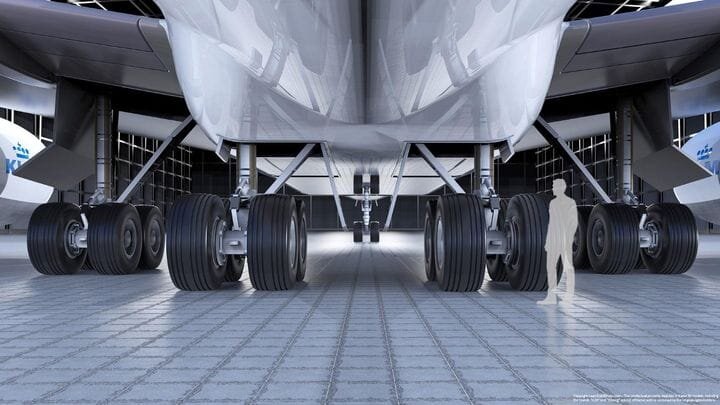![Designing a 747 aircraft to learn CAD? [Source: ENGINEERING.com]](https://fabbaloo.com/wp-content/uploads/2020/05/image-asset_img_5eb08d9d17b7c.jpg) Designing a 747 aircraft to learn CAD? [Source: ENGINEERING.com]
Designing a 747 aircraft to learn CAD? [Source: ENGINEERING.com]
The landing gear of the 747 required special attention. Jan spent a day in the hangar measuring and photographing a 747 at Amsterdam’s Schipol Airport.
He took hundreds of photos of the landing gear. He got to sit in the cockpit. Don’t try this at home. Jan got away with it because his friend, a mechanical engineer who works for KLM, the national airline and owner of the 747, allowed him access.
If you took a class to learn how to model with SolidWorks, you were subjected to a parade of objects, brackets, sliders, separators, V-blocks, guides, etc. They are all 3D shapes, possibly derived but long since removed from industrial reality. They will have two effects. One, they teach you how to sketch, extrude and loft, fillet… familiarizing you to all the powers of your software. Second, they will put you to sleep. The objects you are asked to model are unrelatable, uninteresting, just tools to learn a trade.
When you are done with your course, you will have a portfolio that looks like everyone else’s portfolio.
Now imagine the look of your prospective employer who has asked you to show them what you have made, and you show a beautifully rendered image of an entire aircraft. Not just an artist’s rendering of some comic book fascination, but a carefully created solid model that your soon-to-be boss will instantly recognize: a Boeing Jumbo Jet, the 747-8.
![Screenshot of CAD design for a 747 aircraft [Source: ENGINEERING.com]](https://fabbaloo.com/wp-content/uploads/2020/05/image-asset_img_5eb08d9d53a82.jpg) Screenshot of CAD design for a 747 aircraft [Source: ENGINEERING.com]
Screenshot of CAD design for a 747 aircraft [Source: ENGINEERING.com]
A commercial aircraft used for a tutorial? We came across someone claiming to do just that.
We tracked down Jan Willem Zuyderduyn in his home-office in the picturesque town of Guys (pronounced Hoose) in the Netherlands to explain how this might be possible.
Beauty Is Skin Deep
As an industrial designer, Jan has mastered SOLIDWORKS well enough to teach it. He has built a business in teaching those who want to learn SolidWorks, saving poor souls the drudgery of designing brackets and other useless and boring widgets.
Why the 747, we have to ask.
Jan calls the hulking, bulging Boeing 747 “beautiful,” the way a proud parent would show a picture of their child grown up. Politeness demands we not disagree. Truth be told, the 747 has been likened to a whale. Conceived as a cargo plane, it lost what appears to be the opposite of a beauty contest, to the even more unsightly C5A by Lockheed.
If modeling an entire aircraft single-handedly, in a few months, as a learning exercise, sounds far-fetched, that’s because it is. Jan doesn’t claim to be modeling the whole aircraft, down to its spars, hydraulics, wiring, rivets and so on. The model is definitely simplified, an assembly of 677 solids.
Jan models enough to make it look realistic from the outside while it is on the tarmac. The aircraft is a solid mass with enough detail to look real from the outside. The sheet metal shapes of the fuselage, the wings, tail, engine nacelles shine with the new plane look. Jan is careful to state that he is making no claim to the intellectual property, or is officially associated with either KLM or Boeing.
Jan has achieved an aesthetic fidelity to the real aircraft. Making the 747 look “real” was more art than science. Whereas fuselage shapes of aircraft are defined as a series of sections drawn with spline curves and then lofted together, Jan’s method entailed starting with an initial set of surfaces and then tweaking them until they “look right.”
SolidWorks would be proud of such a model, but the fact that a student could make it is astonishing.
The 747 complete model took 4 months to create. The model files are a total of about 300MB.
Read more at ENGINEERING.com

